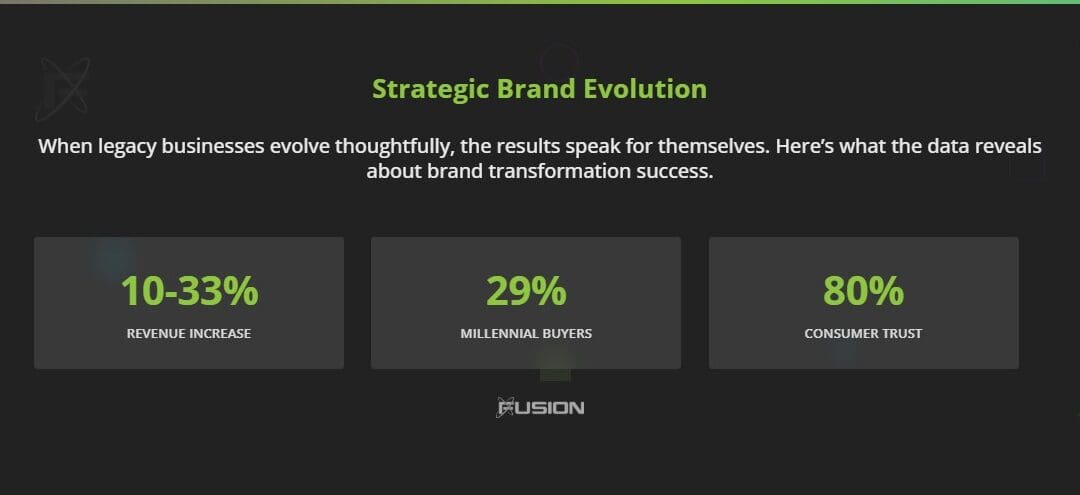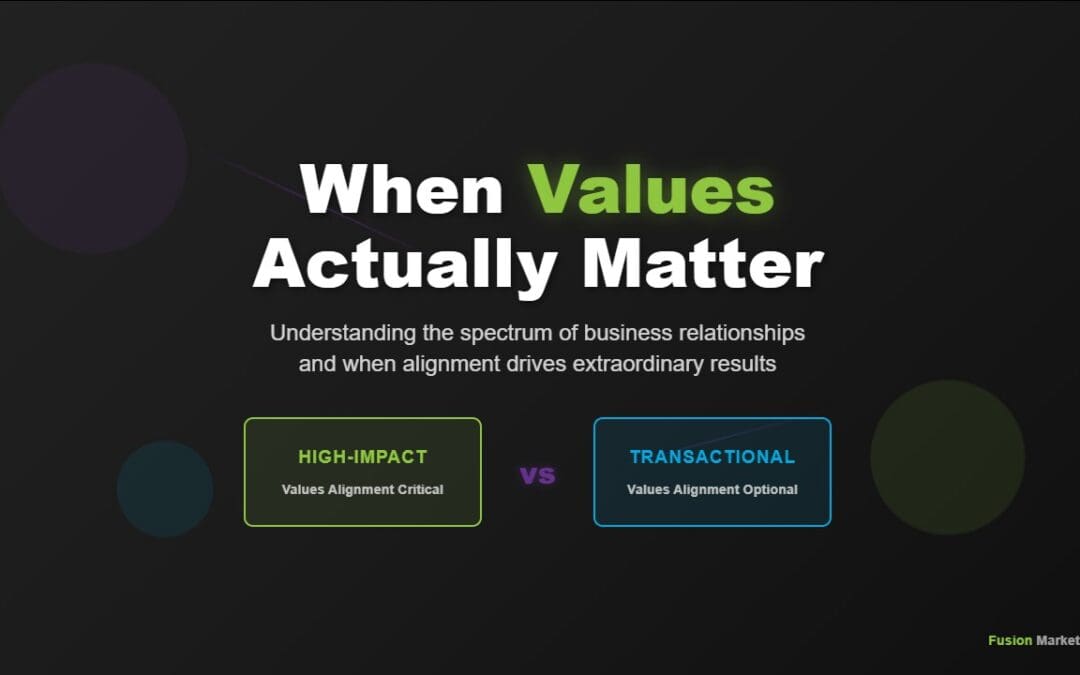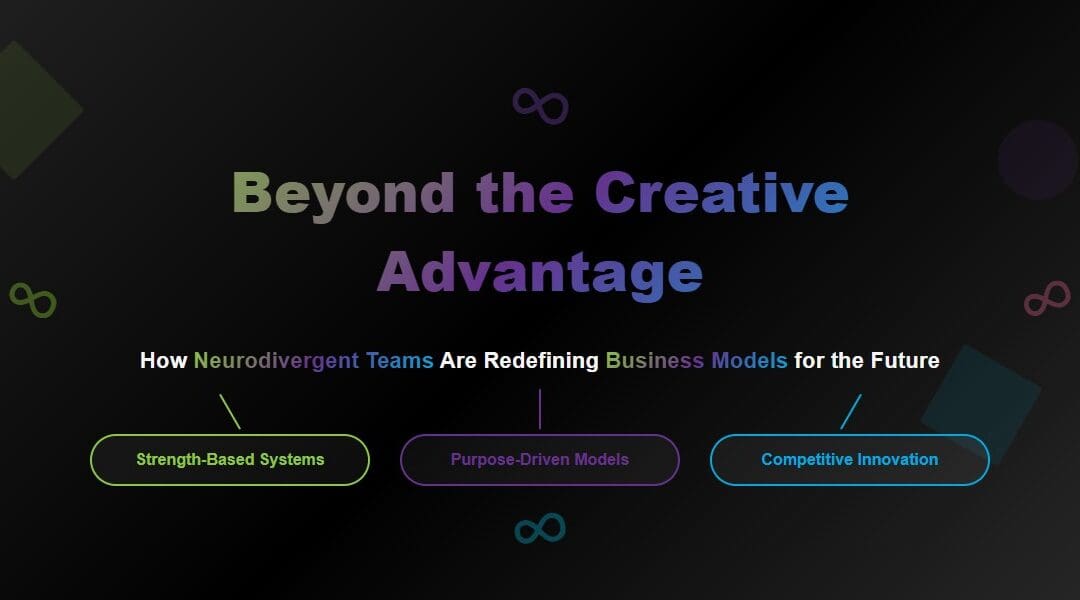Every fall, the requests start rolling in. A banner for the high school football team. A small donation for the community theater’s latest production. A logo placement at the bottom of the local charity run flyer. Service-based businesses across America write these checks with genuine intentions, wanting to support their communities and give back to organizations doing important work.
But John Hofmann, Founder at Fusion Marketing, sees a fundamental problem with this approach. “When you sponsor a banner or donate a couple hundred dollars to an event, you’re essentially providing a band-aid,” he explains. “The organization can cover their hard costs so they can hold the event, but then they’re right back into that same space.”
The Real Problem
The heart isn’t wrong, but the impact falls flat. Most traditional sponsorships address symptoms rather than root causes. While a few hundred dollars might cover event expenses, it doesn’t solve the underlying challenges that keep smaller nonprofits and community organizations struggling.
“The real issues aren’t about event funding,” Hofmann points out. “They’re about having the professional foundation needed to grow, attract volunteers, and secure ongoing support.” Most smaller organizations simply don’t have the financial resources to develop the branding and digital presence that larger organizations take for granted.
Recent industry research confirms this gap’s significance. A comprehensive analysis by NonProfit PRO found that organizations investing in professional branding are 50% more likely to see increases in fundraising revenue. Even more compelling, 93% of nonprofits report that strong brand identity boosts donor engagement, while 74% say professional branding directly increases recurring donations.
The importance of strategic branding extends beyond mere aesthetics. As NonProfit PRO emphasizes in their brand strategy research, a clear brand strategy is vital to achieving nonprofit missions and broadening organizational impact – yet it remains out of reach for many smaller organizations.
Without professional branding, these organizations struggle to build recognition and trust in their communities. Without effective websites, they can’t tell their stories compellingly, showcase their impact, or provide easy ways for people to get involved or donate. These foundational gaps create a cycle of event-to-event survival rather than sustainable growth.
The digital divide is particularly striking. As Morweb research reveals, 63% of donors now prefer online giving, yet many smaller nonprofits lack the web presence needed to capture this preference. Organizations without mobile-optimized, user-friendly websites miss critical opportunities to convert visitors into supporters.
Shifting From Passive to Active Impact
This realization led Fusion Marketing to develop something different: the Pairadox Project. Rather than asking businesses to write separate checks for community giving, the program integrates meaningful impact directly into business services.
“We have been giving back to the community since we started Fusion in 2013, and we’ve always been able to do this because our clients support us and ultimately give us the financial wherewithal to do these really cool things,” Hofmann reflects. “Unfortunately, they’ve always played a passive role in all of the good that we’ve done over the years.”
The Pairadox Project changes that dynamic entirely. “So the Pairadox Project really shifts them from being passively involved to being actively involved. Now they’re the hero of the story instead of us, and we’re just the catalyst for helping them make more of a difference.”
- Covers only immediate event costs
- Creates temporary visibility
- Addresses symptoms, not root causes
- Limited ongoing impact
- Passive business involvement
- Event-to-event survival cycle
- Builds lasting foundation tools
- Creates sustainable growth platform
- Solves underlying challenges
- Enables long-term impact
- Active business partnership
- Empowers continuous improvement
How It Works
The concept is elegantly simple. When a service-based business hires Fusion for qualifying projects – specifically logo design/branding or website development – they automatically become partners in community impact. Fusion provides equivalent services to a nonprofit at no cost, chosen from the client’s preferred cause category.
The business gets the professional services they need for their own growth while simultaneously providing an organization with foundational tools for long-term success.
Fusion chose these two services strategically. “Most of your smaller organizations simply don’t have the financial wherewithal to develop a foundational brand that they can grow and build off of, or the ability to truly develop a home base that helps them showcase the difference that they’re making in their community, solicit volunteers with storytelling, and ultimately garner more foundational support through individual donations and grant funding.”
Research from the Center for Advancement of Community Philanthropy Resources reinforces this strategic focus. Their analysis shows that branding directly fosters trust, drives donor behavior, and builds organizational sustainability – with 93% of nonprofit leaders identifying well-crafted branding as central to boosting donor engagement.
The Selection Process
Transparency drives every aspect of the program. At the project’s beginning, businesses select from cause categories including animal welfare, youth programs, food security, veterans’ support, and domestic violence prevention.
The actual selection happens through a recorded process that creates content for everyone involved. “When we’re wrapping up the project, we do a random drawing where we record the selection with the business,” Hofmann explains. “Essentially we take all of the qualifying organizations inside of the program and we plop them inside of a wheel and then we spin it digitally.”
That recorded selection gets shared on social media, highlighting both the business’s involvement and celebrating the nonprofit’s win. It’s transparency that serves multiple purposes: ensuring fairness, creating shareable content, and demonstrating tangible impact.
Recognition That Resonates
Traditional sponsorships often provide minimal visibility – maybe a logo on a banner that gets stored after the event. The Pairadox Project creates lasting recognition instead.
“The business will receive a plaque showing that they’ve become a Pairadox partner that they can display inside of their office or lobby to spark conversations,” Hofmann notes. “They’ll also receive a press release that gets sent out to local media as well as other digital assets like social media graphics and an email badge.”
These aren’t just participation trophies – they’re conversation starters that will allow businesses to share their impact story with clients and visitors in meaningful ways.
Hand Up, Not Handout
The difference between providing professional branding or website development versus traditional sponsorship represents a fundamental shift in approach. Professional branding helps organizations build trust and recognition that lasts beyond any single event. An effective website provides a 24/7 platform for storytelling, volunteer recruitment, and ongoing fundraising.
This transformation imperative has never been more critical. A major 2025 research study published in NonProfit PRO confirms that digital transformation – including robust, data-driven online experiences – is now essential for nonprofits aiming for long-term impact and sustainability.
The research by Bound State Software demonstrates the practical impact: mobile-optimized, user-friendly websites help nonprofits convert visitors into donors while maintaining high supporter engagement. When combined with strategic design elements, these tools create sustainable fundraising foundations that traditional sponsorships simply cannot match.
“You’re not just sponsoring a banner for an event or throwing a logo at the bottom of a flyer,” Hofmann emphasizes. “You are solving a problem for yourself while effectively giving a hand up to an organization that’s putting in work that otherwise would not be able to receive those type of resources.”
These aren’t temporary solutions – they’re investments in an organization’s ability to create lasting change and sustainable growth.
Building the Foundation
The Pairadox Project represents a new approach to community impact, and like many innovative programs, it’s building momentum gradually. While Fusion has completed branding projects for several nonprofits over the years – including recent work with organizations like the Eastside Chamber – the formal Pairadox process with its transparent selection and recognition components is just launching.
Currently, ten nonprofits have completed applications spanning diverse cause areas: from TrueLife Academy’s disability services to The Paws Clause’s animal welfare work and 1 Little Meal’s food security focus. These organizations represent exactly the type of community-driven groups that traditional sponsorship often overlooks – organizations doing critical work but lacking the resources for professional branding or digital presence.
As Nonprofit Tech for Good’s comprehensive analysis illustrates, professional design directly affects donor and volunteer engagement through improved trust, clearer messaging, and more compelling calls to action. The Pairadox Project aims to provide these proven benefits to organizations that need them most.
Beyond Obligation
For service businesses tired of community giving that feels more like writing checks out of obligation, the Pairadox Project offers something different: meaningful involvement that creates ripple effects rather than one-time fixes.
The choice becomes clear when viewed through this lens. Continue with band-aid sponsorships that disappear after the event, or partner with efforts that create lasting community impact while growing your own business.
“When you help an organization build a stronger foundation,” Hofmann concludes, “you’re enabling them to better serve their community for years to come.”







